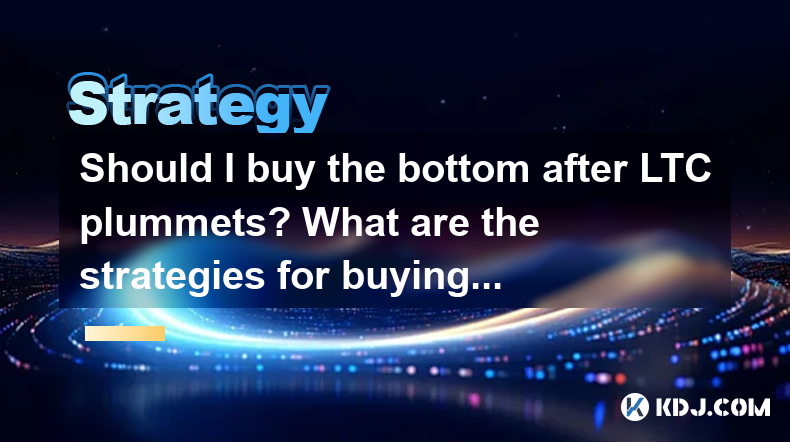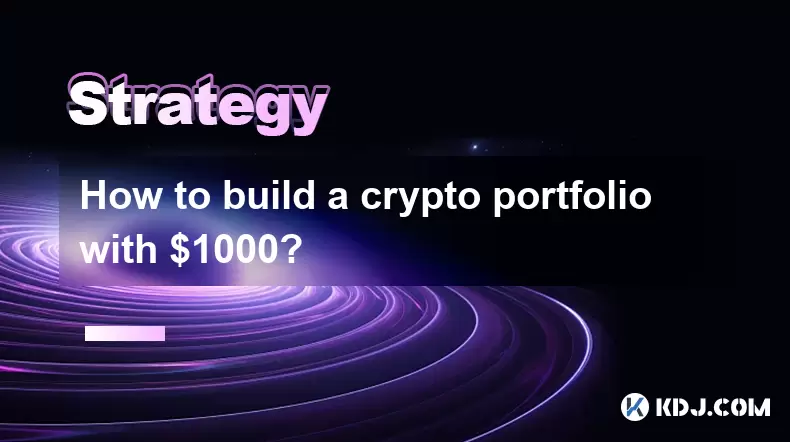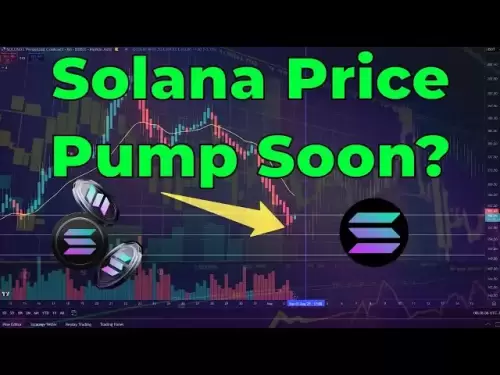-
 Bitcoin
Bitcoin $114400
1.84% -
 Ethereum
Ethereum $3496
3.49% -
 XRP
XRP $2.902
5.12% -
 Tether USDt
Tether USDt $1.000
0.03% -
 BNB
BNB $750.6
1.83% -
 Solana
Solana $161.8
3.52% -
 USDC
USDC $0.9999
0.01% -
 TRON
TRON $0.3262
2.20% -
 Dogecoin
Dogecoin $0.1991
4.57% -
 Cardano
Cardano $0.7243
5.29% -
 Hyperliquid
Hyperliquid $38.41
7.08% -
 Stellar
Stellar $0.3963
8.77% -
 Sui
Sui $3.437
4.53% -
 Chainlink
Chainlink $16.26
5.05% -
 Bitcoin Cash
Bitcoin Cash $542.7
3.79% -
 Hedera
Hedera $0.2474
9.14% -
 Ethena USDe
Ethena USDe $1.001
0.04% -
 Avalanche
Avalanche $21.39
3.03% -
 Toncoin
Toncoin $3.637
1.63% -
 Litecoin
Litecoin $109.0
3.76% -
 UNUS SED LEO
UNUS SED LEO $8.964
0.07% -
 Shiba Inu
Shiba Inu $0.00001219
4.31% -
 Polkadot
Polkadot $3.593
4.12% -
 Uniswap
Uniswap $9.149
5.01% -
 Monero
Monero $299.0
2.38% -
 Dai
Dai $1.000
0.01% -
 Bitget Token
Bitget Token $4.339
2.29% -
 Pepe
Pepe $0.00001047
5.37% -
 Cronos
Cronos $0.1340
6.71% -
 Aave
Aave $258.7
5.06%
Should I buy the bottom after LTC plummets? What are the strategies for buying the bottom?
Buying Litecoin after a dip can be lucrative but risky; use dollar-cost averaging, technical analysis, and stop-loss orders to navigate market volatility effectively.
Apr 30, 2025 at 10:28 am

Understanding Litecoin (LTC) and Market Dips
When considering whether to buy Litecoin (LTC) after a significant price drop, it's crucial to understand the nature of cryptocurrencies and their market behavior. Litecoin, often referred to as the silver to Bitcoin's gold, is a peer-to-peer cryptocurrency that enables instant, near-zero cost payments to anyone in the world. Like all cryptocurrencies, LTC is subject to high volatility, which can lead to significant price drops or "plummets." These dips can be seen as opportunities for investors to buy at a lower price, but they also come with risks.
The Concept of Buying the Bottom
Buying the bottom refers to purchasing an asset when its price has reached its lowest point after a decline. This strategy is appealing because it allows investors to buy at a discount and potentially reap higher returns when the price rebounds. However, identifying the bottom is challenging, as it requires predicting market movements, which is inherently difficult in the volatile crypto market.
Risks and Considerations of Buying the Bottom
Before deciding to buy LTC at what you believe is the bottom, it's important to consider the risks involved. Market timing is notoriously difficult, and what appears to be the bottom might just be a temporary low before further declines. Additionally, emotional investing can lead to poor decision-making, as the fear of missing out (FOMO) or panic selling can cloud judgment. It's essential to have a clear investment strategy and risk tolerance before attempting to buy the bottom.
Strategies for Buying the Bottom
To increase the chances of successfully buying the bottom, several strategies can be employed. These strategies aim to mitigate risk and improve the timing of your investment.
Dollar-Cost Averaging (DCA)
Dollar-cost averaging is a strategy where an investor divides the total amount to be invested across periodic purchases of a target asset to reduce the impact of volatility on the overall purchase. This method can be particularly useful when trying to buy the bottom, as it allows you to spread out your investment over time.
- Choose a fixed amount to invest in LTC at regular intervals, such as weekly or monthly.
- Set up automatic purchases to ensure consistency and remove emotional decision-making from the process.
- Monitor the market but stick to your schedule, even if the price continues to drop, as this can lead to a lower average cost per LTC.
Technical Analysis
Technical analysis involves studying historical price data and market statistics to identify patterns and predict future price movements. While not foolproof, it can provide insights into potential buying opportunities.
- Use charting tools to identify support and resistance levels, which can indicate where the price might bottom out.
- Look for indicators such as the Relative Strength Index (RSI) or Moving Average Convergence Divergence (MACD) to gauge whether LTC is oversold and due for a rebound.
- Combine multiple indicators to increase the reliability of your analysis, but remember that past performance does not guarantee future results.
Fundamental Analysis
Fundamental analysis focuses on the intrinsic value of LTC, considering factors such as its technology, adoption, and market position. This approach can help determine if LTC is undervalued and worth buying at a lower price.
- Research Litecoin's technology and its advantages over other cryptocurrencies, such as faster transaction times and lower fees.
- Evaluate Litecoin's adoption by looking at its use in real-world transactions and its acceptance by merchants and exchanges.
- Consider the broader market sentiment towards cryptocurrencies and how it might affect LTC's price in the long term.
Setting Stop-Loss Orders
Stop-loss orders are a risk management tool that can help protect your investment if the price continues to fall after you buy. By setting a stop-loss order, you can automatically sell your LTC if it drops to a certain price, limiting your potential losses.
- Determine your risk tolerance and set a stop-loss order at a price that aligns with your comfort level.
- Monitor the market and adjust your stop-loss order as needed to reflect changes in your investment strategy or market conditions.
- Be aware of the potential for slippage, where the execution price of your stop-loss order may differ from the set price due to market volatility.
Implementing Your Strategy
Once you have chosen a strategy or combination of strategies, it's time to implement your plan. Here's how you can go about buying LTC at what you believe is the bottom:
- Choose a reputable exchange that supports LTC trading, such as Coinbase, Binance, or Kraken.
- Fund your account with the amount you plan to invest, keeping in mind your chosen strategy (e.g., DCA).
- Place your order according to your strategy. If using DCA, set up recurring purchases. If using technical analysis, wait for the indicators to signal a buying opportunity.
- Monitor your investment and adjust your strategy as needed based on market conditions and your risk tolerance.
Frequently Asked Questions
Q: How can I tell if Litecoin has truly reached its bottom?
A: Identifying the true bottom of Litecoin's price is challenging and often only clear in hindsight. You can use technical analysis to look for signs of an oversold market, such as a low RSI, and monitor volume to see if it increases at the bottom, indicating potential buying interest. However, no method is foolproof, and it's important to be prepared for further declines.
Q: Is it better to buy Litecoin all at once or spread out my purchases?
A: This depends on your investment strategy and risk tolerance. Buying all at once can be riskier but may lead to higher returns if the price rebounds quickly. Spreading out your purchases through dollar-cost averaging can reduce the impact of volatility and potentially lower your average cost per LTC.
Q: What should I do if Litecoin's price continues to drop after I buy?
A: If you have set a stop-loss order, it will automatically sell your LTC if the price reaches your predetermined level. If you haven't set a stop-loss, you'll need to decide whether to hold, sell at a loss, or buy more to average down your cost. This decision should be based on your overall investment strategy and risk tolerance.
Q: Can I use the same strategies for buying the bottom of other cryptocurrencies?
A: Yes, the strategies discussed, such as dollar-cost averaging, technical analysis, fundamental analysis, and setting stop-loss orders, can be applied to other cryptocurrencies. However, each cryptocurrency has its own market dynamics and risks, so it's important to tailor your approach to the specific asset you're investing in.
Disclaimer:info@kdj.com
The information provided is not trading advice. kdj.com does not assume any responsibility for any investments made based on the information provided in this article. Cryptocurrencies are highly volatile and it is highly recommended that you invest with caution after thorough research!
If you believe that the content used on this website infringes your copyright, please contact us immediately (info@kdj.com) and we will delete it promptly.
- Navigating the Wild West: Token Unlocks and Altcoin Surges - A Trader's Guide
- 2025-08-04 02:30:11
- Snorter Presale Fuels Meme Coin Frenzy: Price Explosion Incoming?
- 2025-08-04 02:50:12
- Bitcoin, Altcoins, and Momentum: What's Moving the Crypto Markets?
- 2025-08-04 02:30:11
- Crypto Analysts' August Picks: Beyond Bitcoin and Ethereum
- 2025-08-04 02:50:12
- Punisher Coin Presale: Your Ticket to 100x Gains in 2025?
- 2025-08-04 00:50:14
- BlockchainFX: The Next Crypto Millionaire Maker After BNB and Tron?
- 2025-08-04 01:10:14
Related knowledge

How to avoid common crypto investment mistakes?
Jul 13,2025 at 01:35am
Understanding the Risks of Crypto InvestmentInvesting in cryptocurrency can be highly rewarding, but it also comes with significant risks. One of the ...

What is a long-short crypto strategy?
Jul 15,2025 at 10:56am
Understanding the Basics of a Long-Short Crypto StrategyA long-short crypto strategy is an investment approach where traders simultaneously take long ...

What is a long-short crypto strategy?
Jul 11,2025 at 01:28pm
Understanding the Basics of Long-Short Crypto StrategyA long-short crypto strategy is an investment approach where traders take both long and short po...

How to use the RSI indicator for crypto?
Jul 12,2025 at 03:56pm
Understanding the RSI Indicator in Cryptocurrency TradingThe Relative Strength Index (RSI) is a momentum oscillator used to measure the speed and chan...

Is copy trading a good strategy for crypto beginners?
Jul 12,2025 at 08:28am
Understanding Copy Trading in the Cryptocurrency MarketCopy trading is a strategy where novice traders replicate the trades of experienced investors a...

How to build a crypto portfolio with $1000?
Jul 13,2025 at 08:14pm
Understanding the Basics of Cryptocurrency InvestmentBuilding a crypto portfolio with $1000 starts with understanding the fundamentals of cryptocurren...

How to avoid common crypto investment mistakes?
Jul 13,2025 at 01:35am
Understanding the Risks of Crypto InvestmentInvesting in cryptocurrency can be highly rewarding, but it also comes with significant risks. One of the ...

What is a long-short crypto strategy?
Jul 15,2025 at 10:56am
Understanding the Basics of a Long-Short Crypto StrategyA long-short crypto strategy is an investment approach where traders simultaneously take long ...

What is a long-short crypto strategy?
Jul 11,2025 at 01:28pm
Understanding the Basics of Long-Short Crypto StrategyA long-short crypto strategy is an investment approach where traders take both long and short po...

How to use the RSI indicator for crypto?
Jul 12,2025 at 03:56pm
Understanding the RSI Indicator in Cryptocurrency TradingThe Relative Strength Index (RSI) is a momentum oscillator used to measure the speed and chan...

Is copy trading a good strategy for crypto beginners?
Jul 12,2025 at 08:28am
Understanding Copy Trading in the Cryptocurrency MarketCopy trading is a strategy where novice traders replicate the trades of experienced investors a...

How to build a crypto portfolio with $1000?
Jul 13,2025 at 08:14pm
Understanding the Basics of Cryptocurrency InvestmentBuilding a crypto portfolio with $1000 starts with understanding the fundamentals of cryptocurren...
See all articles

























































































